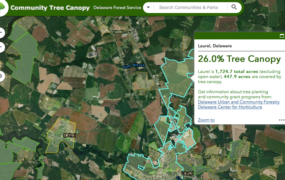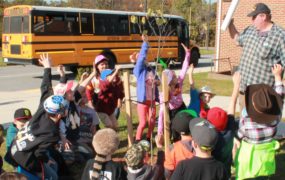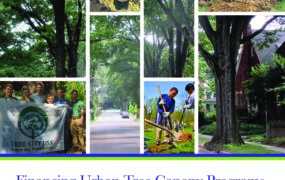Introduction
Delaware’s Urban and Community Forestry Program has been raising the standard when it comes to engaging diverse constituents in tree planting and care. In just three short years, the state has implemented several local grant programs that have greatly expanded the reach of tree planting activities.
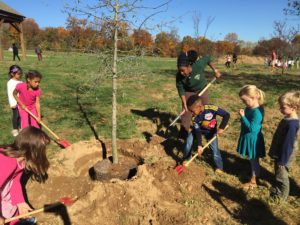
Planting Activities
In 2013, the Delaware Urban and Community Forestry Program began exploring incentive-based initiatives to increase the number of trees planted in the Chesapeake Bay Watershed. The Urban and Community Forestry Program partnered with the Delaware Department of Natural Resources to reduce non-point source pollution. Through the Trees for the Bay program, each time the Department of Natural Resources sold a rain barrel, the purchaser received a $100 gift card good for one tree, courtesy of the Urban and Community Forestry Program. Trees for the Bay lasted through 2014, and illuminated other opportunities for institutions, not just individuals, to influence canopy growth in the watershed.
Led by Urban Forestry Coordinator Kesha Braunskill and Outreach Coordinator Dionne Duphily, the Delaware Urban and Community Forestry Program moved away from incentive-based planting strategies into a community capacity building model for engagement. They began strategically expanding outreach to diverse stakeholders through the Urban Grant Program. By engaging community institutions, Delaware’s Urban and Community Forestry Program could provide guidance for species selection and planting technique, upping the odds for long term survival of the new trees.
Funding and Technical Support
Throughout 2015 and 2016, these grants are available to community stakeholders statewide, specifically targeting partners with land in the Chesapeake Bay Watershed. Delaware Urban and Community Forestry Program staff promoted the program via their website and a direct mailing campaign complete with pamphlets and brochures to ensure those who lived in low-canopy zones were aware of the grant program. Interfaith groups, community institutions, and nonprofits applied to receive grants that totaled $50,000 in tree planting support. Grantees included Seaford District Library, Friends of Trap Pond, and Our Lady of Lourdes Catholic Church.
Funding to support this program originates at the federal level, and comes with a matching requirement, so grantees are encouraged to be creative with their match. Matches can include variations of funding, volunteer, contractor time, and more. “Just like other tree planting programs, funding is limited. These funds help expand our reach, as they are separate from our state funding,” notes Kesha Braunskill. She says most of the state is rural, so much of the space in southern DE isn’t plantable or exists outside of traditional jurisdictions that have been targeted for planting in the past, like Home Owners Associations and right-of-way previously (HOAs and Cities). Community Groups also come to the grant program with built-in volunteer networks, ensuring a ready volunteer base for planting day. Delaware Urban and Community Forestry Program Grantees are also supported with technical assistance from Delaware Forest Service staff, included having additional accountability with an audit of the trees up to one year after the planting. “We make sure people do what they say they would, notes Braunskill. “There have been cases where people said they would plant a black gum, and it turned out to be a Bradford pear.”
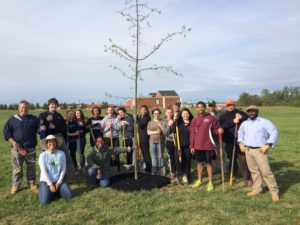
Partner Spotlight
Structuring the Urban Grant Program for success enabled grantees to creatively engage underrepresented populations in tree planting. 2015 grantees planted 2-inch caliper trees on the land they steward with help from local volunteers. Friends of Trap Pond, based near Trap Pond State Park in Laurel, Delaware, planted over 100 trees in high-traffic areas to combat canopy loss of white oaks and other species to removals. Volunteers from the surrounding community came to plant, including members of the local prison population. Our Lady of Lourdes Catholic Church, another grantee off the Urban Grant Program, involved many homeless residents to participate in their planting of 25 trees along their property.
Conclusions
Four planting projects took place in 2015, adding over 300 seedlings and 150 larger-caliper trees to the Chesapeake Bay Watershed. Many more community stakeholders reached out to the Delaware Urban and Community Forestry Program to participate in 2016. Now that they have a wider base of support, the Delaware Urban Forestry Council is actively engaging more communities through education and outreach activities. Earlier in 2016, the Council hosted a municipal pruning workshop, engaging diverse community groups. Delaware is reaching beyond traditional tree-planting partners to make tree planting accessible for all.
Related Resources:
Delaware Forest Service Urban & Community Forestry Grant Program
Story written by Lillie Leaf Solutions
